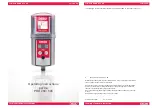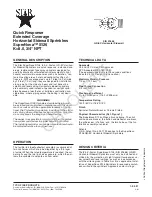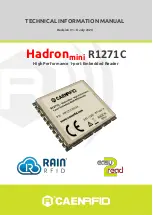
Beta Draft Confidential
21-12
1/19/05
ATM Services Configuration Guide for CBX 3500, CBX 500, GX 550, and B-STDX 9000
Configuring PNNI Routing
PNNI Routing Protocol Overview
PNNI Packets
The following packets carry PNNI control information during exchanges between
neighbors:
Hello Packets — Contain information that neighboring nodes exchange to discover
and verify each other’s identity and to determine the status of the links that connect
them.
Database Summary Packets — Contain the identifying information of all PNNI
Topology State Elements (PTSEs) in a node’s topology database. A PTSE is a
collection of PNNI topology information that is sent to all nodes in a peer group.
PTSEs contain network resource information used to determine the least-cost path
between two endpoints. PTSEs can represent information that pertains to PNNI nodes,
links, or ATM addresses.
When a node first learns that a neighboring peer node residing in the same peer group
exists, it initiates a database exchange process in order to synchronize its topology
database with its neighbor. When one neighbor sends a database summary packet to
another neighbor, the other neighbor responds with its own database summary packet.
PTSE Request Packets — Contain one or more entries that request PTSEs. When a
node examines received database summary packets from neighbors and detects one or
more missing PTSEs in its topology database, it builds a PTSE request packet. This
packet contains a list of IDs that identify the missing PTSEs. The node sends the
PTSE request packet to neighbors, which respond with a PTSP.
PNNI Topology State Packets (PTSPs) — Contain one or more PTSEs. A node
sends PTSPs when it:
•
Detects that its local topology information has changed, in which case it
immediately sends PTSP(s) containing information about the change to its
neighbors.
•
Receives a PTSP containing new topology information from a neighbor; the node
then propagates this information to other neighbors in PTSP packets.
•
Responds to PTSE requests during topology database synchronization.
The first two items above describe the most common reasons for sending PTSPs. The
last item describes the initial database exchange between neighboring PNNI nodes.
PTSE Acknowledgment Packets — Contain acknowledgments of PTSEs received
from a neighbor. A node acknowledges receipt of PTSEs from its neighbors by
sending one PTSE acknowledgement packet for each valid PTSE received.
Summary of Contents for CBX 3500
Page 888: ......
















































